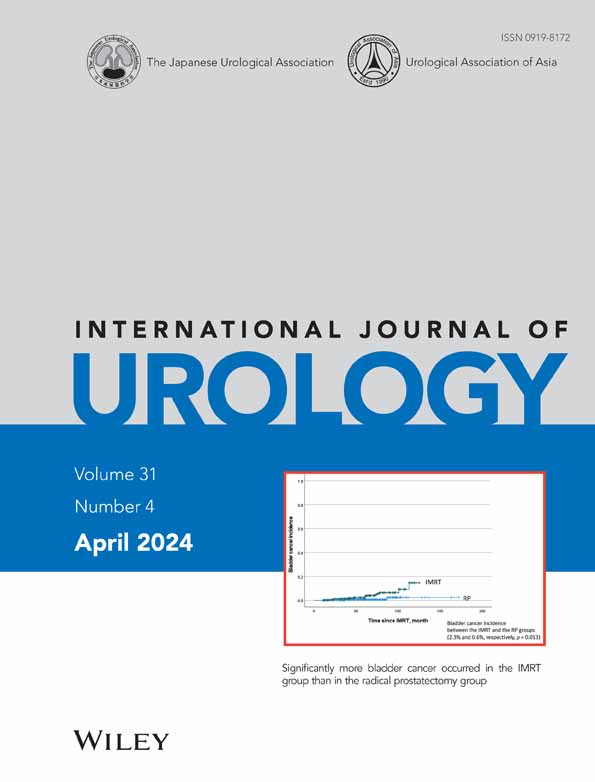Does intensity-modulated radiation therapy by helical tomotherapy for prostate cancer increase the subsequent risk of bladder cancer? A propensity score-matched analysis
Abstract
Objectives
This study aimed to evaluate the risk of bladder cancer after intensity-modulated radiation therapy (IMRT) using helical tomotherapy for prostate cancer in comparison to the risk post-radical prostatectomy (RP) using propensity score-matched analysis and to assess the risk factors for bladder cancer.
Methods
This retrospective study included 2067 patients with non-metastatic prostate cancer treated at our institution between June 2007 and December 2016. Of these, 1547 patients were treated with IMRT and 520 underwent RP. The propensity scores were calculated using age, National Comprehensive Cancer Network risk classification, prostate volume, Brinkman index, and follow-up time as matched covariates. A propensity score-matched patient cohort (n = 718; IMRT: 359, RP: 359) was created, and the risk of bladder cancer after treatment was compared.
Results
In total, bladder cancer was detected in 33 patients. Five patients in the IMRT group and one in the RP group died of bladder cancer. In the propensity score-matched analysis, the 5-year bladder cancer-free survival rate was significantly lower in the IMRT group than in the RP group (91.7% and 96.2%, respectively; p < 0.001). Multivariate analysis revealed that IMRT and the Brinkman index were the risk factors for bladder cancer in this cohort (odds ratio = 5.085, 95% confidence interval = 1.436–18.008, p = 0.012 and odds ratio = 1.001, 95% confidence interval = 1.000–1.001, p = 0.010, respectively).
Conclusions
IMRT for prostate cancer using helical tomotherapy increases the subsequent risk of bladder cancer compared with RP and is an independent risk factor for bladder cancer similar to smoking.
CONFLICT OF INTEREST STATEMENT
The authors declare no conflict of interest.
Open Research
DATA AVAILABILITY STATEMENT
Our reserch data are available upon reasonable request.




